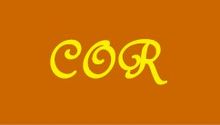James Livingston (American Revolution)
| James Livingston | |
|---|---|

Congress Own Regiment
|
|
| Born |
March 25, 1747 Albany, New York |
| Died | March 9, 1832 (aged 84) Saratoga, New York |
| Allegiance |
|
| Service/branch |
|
| Years of service | 1775–1781 |
| Rank | Colonel |
| Unit | 1st Canadian Regiment |
| Commands held | 1st Canadian Regiment |
| Battles/wars |
Siege of Fort St. Jean Battle of Quebec Battle of Trois-Rivières Battles of Saratoga Battle of Rhode Island |
| Relations | Livingston family |
James Livingston (March 27, 1747 – March 9, 1832) born in New York, was living in Quebec (as Canada was known following the French and Indian War) when the American Revolutionary War broke out. He was responsible for raising and leading the 1st Canadian Regiment of the Continental Army during the invasion of Canada, and continued to serve in the war until 1781. He retired to Saratoga, New York, where he served as a state legislator and raised a family of five children.
James Livingston was born March 27, 1747, to John Livingston and Catherine Ten Broeck, in Albany, New York, where his father was from the locally prominent Livingston family, and his mother was the sister of General Abraham Ten Broeck. By 1765, the family had moved to Montreal.
Livingston was living in Chambly, working as a grain merchant, when the invasion of Quebec began in September 1775. As early as August, he had been in contact with General Philip Schuyler, mostly through the efforts of John Brown, an American spy. On August 18, he sent a messenger to Schuyler at Fort Ticonderoga, presumably with information on British military readiness at Fort Chambly and Fort Saint-Jean; however, this messenger destroyed the message, fearing he might be captured with it. General Richard Montgomery (who was married to one of Livingston's relatives), who was in command of Ticonderoga at the time, sent John Brown back to Livingston. On the 28th, they sent word back to Montgomery with news that spurred him to begin the invasion: the British had almost completed ships capable of threatening the American naval superiority on Lake Champlain.
...
Wikipedia
